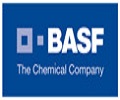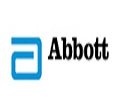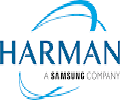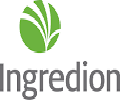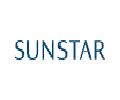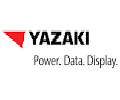-
Email Us
- Top Reports
Global Chemically Competent Cells Market Demand and Supply Dynamics 2025-2032
Price
Single User License 3300
Multi User License 6000
Corporate License 7200
The Chemically Competent Cells market is a pivotal segment within the broader biotechnology and molecular biology landscape, primarily utilized in genetic engineering, cloning, and various DNA manipulation techniques. These cells, which have been treated to facilitate the uptake of plasmid DNA, are essential for researchers and companies involved in gene expression studies, recombinant protein production, and developing therapeutic products. Their ability to transform genetic information into functional proteins or other products offers a critical solution for advancing research and pharmaceutical applications, making them indispensable in modern laboratories.
According to a recent report by STATS N DATA, the Chemically Competent Cells market is witnessing significant growth, driven by an increasing demand for genetic engineering across various sectors, including pharmaceuticals, agriculture, and synthetic biology. Historical data indicates a steady escalation in the market size over the past few years, reflecting a robust interest in biotechnology research and development. The report outlines that the global market is projected to continue this upward trajectory, with an anticipated compound annual growth rate (CAGR) that underscores the burgeoning need for innovative biological solutions. Emerging trends such as the rise in personalized medicine, advancements in genomic research, and the growing utilization of CRISPR technology are expected to further accelerate market expansion.
Key drivers fueling the Chemically Competent Cells market encompass an increasing investment in biopharmaceuticals, a surge in molecular diagnostics, and a heightened focus on synthetic biology initiatives. However, the market faces potential restraints, such as high costs associated with advanced cell preparation technology and regulatory challenges pertaining to genetic alterations. Nevertheless, abundant opportunities exist, with ongoing technological advancements and innovations promising to enhance cell competency, efficiency, and yield. The introduction of next-generation techniques, such as electroporation and improved chemical methods, is transforming how competent cells are produced and utilized, providing researchers with more effective tools for their biotechnology applications. As the market evolves, it is clear that Chemically Competent Cells will play a crucial role in the advancement of genetic research, opening new avenues for discovery and innovation in life sciences.
In today's quickly changing business environment, understanding the latest trends in the CHEMICALLY COMPETENT CELLS MARKET is crucial for staying ahead of the competition. Our detailed market research report by STATS N DATA aims to provide investors and companies with deep insights into the Global Chemically Competent Cells Industry. This report goes beyond standard data analysis by offering advanced forecasts, revenue predictions, and future trends from 2024 to 2031. It's a vital resource for decision-makers who need to navigate the complexities of this evolving market.

Market Overview and Trends
This market research report provides a comprehensive analysis of the current size of the Chemically Competent Cells industry. It leverages historical data to extract key industry insights, tracing the market's evolution over time. This detailed review offers valuable perspectives on the development of the Chemically Competent Cells Market and lays a solid groundwork for understanding its current state. By examining historical trends and patterns, we gain insights that help predict future growth and equip stakeholders to adapt to upcoming changes and opportunities.
Looking forward, the report delivers expert predictions and in-depth analysis of the future Chemically Competent Cells Ecosystem and its trends. These growth projections give a clear view of the expected market direction, aiding stakeholders in navigating and seizing new opportunities. The analysis also highlights major growth drivers, such as technological innovations and rising demand across various sectors, and considers potential obstacles like regulatory issues and economic uncertainties.
Additionally, the report identifies numerous opportunities for future growth, providing a strategic perspective on both the challenges and potential pathways within the Chemically Competent Cells Market. By understanding these market dynamics, stakeholders are better equipped to make informed decisions and craft effective strategies to thrive in this rapidly evolving environment.
Market Segmentation
The Chemically Competent Cells Market is segmented into various categories, including product type, application/end-user, and geography.
The segmentation is as follows:
Type
- Cloned Competent Cells, Agrobacterium tumefaciens Competent Cells, Expression Competent Cells
Application
- Subcloning & Routine Cloning, Phage Display Library Construction, Toxic/Unstable Dna Cloning, High-Throughput Cloning, Protein Expression, Mutagenesis, Single-Stranded Dna Production, Bacmid creation, Cre-lox recombination (PIR1/PIR2)
Note: Market segmentation can be customized upon request to better meet specific business needs and provide targeted insights.
This section of the report delves into the market's detailed segmentation to illustrate the various components and their contributions to the overall market dynamics. Each segment is evaluated based on its size and growth rate, which helps pinpoint which areas are experiencing rapid expansion and which are seeing stable growth. This analysis is crucial for identifying key segments that propel the market forward and hold significant potential for future development.
Additionally, the report features a Chemically Competent Cells Market attractiveness analysis, assessing the desirability of each segment. This assessment takes into account factors like market potential, competitive intensity, and prospects for growth, offering a well-rounded view of which segments are most appealing for investments and strategic initiatives. Identifying these opportunities enables investors and organizations to allocate resources more effectively and enhance their return on investment.
Competitive Landscape
Major players profiled in this report are:
- Merck KGaA
- Thermo Fisher Scientific
- Agilent Technologies
- Takara Bio
- Promega Corporation
- Beijing TransGen Biotech
- GeneScript Corporation
- Yeastern Biotech
- New England Biolabs
- QIAGEN
- OriGene Technologies
- Lucigen
- Zymo Research
- Bio-Rad Laboratories
- Bioline
- Delphi Genetics
- IBA GmBH
- Cell Applications
- BioDynamics Laboratory
- Scarab Genomics
The Chemically Competent Cells industry's competitive landscape is dynamic, with major players consistently working to secure their positions and expand their influence. The report offers an in-depth overview of this landscape, detailing the key players in the Chemically Competent Cells Market and their market shares. This provides a clear understanding of who the major participants are and their roles within the industry.
Additionally, the report includes a SWOT analysis for these key competitors, assessing their strengths, weaknesses, opportunities, and threats. This evaluation delivers a thorough perspective on the competitive dynamics and strategic standing of these players. Understanding the strengths and weaknesses of these competitors enables stakeholders to pinpoint areas needing enhancement and devise strategies to secure a competitive advantage.
Recent Developments
The report covers significant recent developments in the Global Chemically Competent Cells Market, including mergers, acquisitions, partnerships, and product launches. These activities are crucial as they have significantly shaped the competitive landscape and influenced trends within the Chemically Competent Cells industry. Keeping abreast of these developments helps stakeholders anticipate market shifts and tailor their strategies to better align with the evolving market dynamics.
Additionally, this research report features a benchmarking analysis of key products and services. By comparing these offerings, the analysis sheds light on their performance and market positioning. This comparison is vital for identifying industry best practices and pinpointing areas in need of enhancement. Such insights are invaluable for stakeholders aiming to improve their offerings and maintain competitiveness in the market.
Technological Advancements and Innovations
Technological advancements and innovations are crucial in shaping the dynamics of the Global Chemically Competent Cells Market. Our report underscores the latest developments in this realm, demonstrating how recent technological progress and innovative solutions are catalyzing changes and influencing the landscape of the Chemically Competent Cells industry.
Industry Dynamics and Structure
The report also provides a detailed examination of the overall Chemically Competent Cells industry structure and its dynamics. This analysis offers a clear view of how the industry operates and evolves, highlighting key components and their interactions. Understanding these elements allows stakeholders to spot opportunities for collaboration and innovation, which are essential for driving market growth and development.
Competitive Analysis Using Porter's Five Forces
Additionally, our Chemically Competent Cells Market report employs Porter's Five Forces Analysis to scrutinize the competitive landscape. This analysis evaluates the bargaining power of buyers and suppliers, the threat of new entrants and substitute products, and the level of competitive rivalry. This strategic framework is instrumental in identifying the factors that influence the industry's profitability and competitiveness, equipping stakeholders with critical insights for informed decision-making.
Value Chain Analysis
The report includes a comprehensive value chain analysis that traces the path from suppliers to end-users. This analysis is driven by a detailed market study that offers insights into each phase of the process. It highlights where value is added and pinpoints potential areas for efficiency improvements or strategic adjustments. By optimizing the value chain, stakeholders can boost their operational efficiency and secure a competitive edge.
Customer Preferences and Trends
Furthermore, the report identifies key customer preferences and trends, providing clarity on what consumers expect from products and services. Understanding these preferences helps businesses anticipate market trends and tailor their offerings accordingly. By aligning their strategies with customer needs, stakeholders can improve customer satisfaction and foster business growth.
Regulatory Environment
This comprehensive report emphasizes the key regulations and standards that influence the Chemically Competent Cells Market, offering an in-depth overview of the legal and regulatory framework that dictates industry operations. This information is crucial for comprehending the rules and guidelines to which market participants must conform. Staying current with regulatory changes enables stakeholders to maintain compliance and sidestep potential legal complications.
The report also delves into the impact of recent regulatory modifications in the Chemically Competent Cells industry, evaluating how these changes shape the market and affect its stakeholders. Additionally, it equips stakeholders to foresee potential challenges and adjust their strategies effectively. Understanding the regulatory landscape empowers stakeholders to make well-informed decisions and formulate strategies that minimize risks while maximizing opportunities.
Furthermore, this report details the compliance requirements for participants in the Chemically Competent Cells Market, outlining essential steps for adhering to regulations and standards. Grasping these compliance demands is vital for preserving legal and operational integrity within the market. By emphasizing compliance, stakeholders can foster trust among customers and enhance their standing in the marketplace.
Market Entry Strategy
Entering the Chemically Competent Cells industry presents several challenges, including high barriers and competitive pressures. This report identifies the primary obstacles that new entrants must navigate to successfully penetrate the market. Such barriers include substantial capital requirements, strict regulatory standards, and fierce competition from well-established players.
Moreover, the report outlines critical success factors for new entrants in the Chemically Competent Cells market. These factors cover essential aspects like innovation, effective marketing strategies, strategic partnerships, and a strong value proposition. By concentrating on these key elements, new entrants can effectively manage the complexities of the market and significantly improve their prospects for success.
Additionally, the report offers strategic recommendations for market entry. These recommendations provide practical advice on market positioning, customer acquisition strategies, and differentiation tactics. Tailored to assist new entrants in establishing a robust market presence and competitive edge, these strategies enable them to surmount entry barriers and leverage opportunities within the Chemically Competent Cells Market.
Economic Indicators and Risk Analysis
This report delves into the impact of macroeconomic factors on the Chemically Competent Cells Market, exploring how elements like GDP growth, inflation rates, and employment trends shape market dynamics. The analysis provides stakeholders with a thorough understanding of the broader economic environment and its influence on the market, enabling informed decision-making.
Identified risks and uncertainties within the Chemically Competent Cells Market are also thoroughly examined, highlighting potential challenges to market stability and growth. These risks include economic volatility, regulatory shifts, and intense market competition. By comprehending these risks, stakeholders can devise strategies to mitigate them and bolster market resilience.
Furthermore, the report offers specific strategies for mitigating the identified risks. This section on impact assessment and mitigation provides actionable recommendations that help Chemically Competent Cells Market participants better manage risks and maintain stability. By proactively addressing these risks, stakeholders can safeguard their interests and foster sustainable growth.
Investment Analysis
This research evaluates the key suppliers and distributors in the Chemically Competent Cells Market, highlighting the main entities involved in product provision and distribution. The report sheds light on their capabilities, reliability, and strategic significance within the supply chain. Understanding these dynamics allows stakeholders to optimize their operations and solidify their positions in the market.
Moreover, the Chemically Competent Cells report identifies prime investment opportunities and offers strategic recommendations. It provides insights into areas with significant potential for high returns, helping investors make informed decisions about resource allocation for optimal impact. Strategic investments in these high-potential areas can substantially increase profitability and stimulate market growth.
Additionally, the Chemically Competent Cells report includes a comprehensive analysis of return on investment (ROI) and financial projections. This analysis is crucial for assessing the expected profitability of investments and aids in crafting informed financial strategies. Understanding these financial forecasts is essential for evaluating the potential returns and associated risks of various investment avenues. By leveraging data-driven investment decisions, stakeholders can maximize their returns and achieve their financial objectives.
The report also encompasses feasibility studies for potential new projects or ventures. These studies evaluate the viability of new endeavors by analyzing Chemically Competent Cells market demand, cost estimates, and potential revenue. Such evaluations ensure that investors can make well-informed decisions about engaging in new opportunities. Pursuing feasible projects allows stakeholders to expand their market presence and propel business growth.
Technological and Innovation Insights
The Chemically Competent Cells Market report delves into emerging technologies and their potential to significantly impact the market, underscoring how these technological advancements are setting the stage for the industry's future. This section highlights innovations that could potentially disrupt the market landscape, opening up new avenues for growth and innovation.
Additionally, the report provides a detailed analysis of the innovation landscape and research and development (R&D) activities within the Chemically Competent Cells Market. It examines the ongoing R&D efforts and the general state of innovation, giving a holistic view of how companies are spearheading progress and maintaining competitiveness. This examination is crucial for understanding the role of innovation in driving market development and improving product offerings.
Regional Insights
This analysis provides extensive regional insights into the market, offering a detailed examination of various geographical areas to understand their unique Chemically Competent Cells Market dynamics, trends, and opportunities.
North America
The North American Chemically Competent Cells Market analysis includes insights into the primary drivers, challenges, and growth prospects in this region. This section highlights recent trends and developments that are influencing the market in North America.
South America
The report delves into the South American Chemically Competent Cells Market, exploring the factors that are shaping its growth and the specific challenges it faces. It provides a comprehensive overview of current market conditions and emerging opportunities in this region.
Asia-Pacific
This section addresses the dynamic and rapidly evolving Chemically Competent Cells Market in the Asia-Pacific region. It examines the drivers of growth, regional trends, and the potential for future expansion.
Middle East and Africa
Insights into the Middle East and Africa are also provided, discussing the unique Chemically Competent Cells Market conditions, growth opportunities, and challenges present in these regions. Additionally, it highlights key trends and the impact of regional developments on the market.
Europe
The European Chemically Competent Cells Market is analyzed in detail, focusing on the trends, opportunities, and challenges specific to this region. This overview sheds light on the factors influencing market growth and the strategic initiatives driving success in Europe.
Key Questions Addressed in This Report
This comprehensive report provides detailed answers to several pivotal questions, ensuring that stakeholders acquire a profound understanding of the Chemically Competent Cells Market:
What is the Global Chemically Competent Cells Market size and what growth rate can be expected during the forecast period?
What are the key factors driving the growth of the Chemically Competent Cells Market?
What challenges and risks does the Chemically Competent Cells Market currently face?
Who are the major players in the Chemically Competent Cells Market?
What are the current trends influencing the shares of the Chemically Competent Cells Market?
What insights can be gleaned from applying Porter's Five Forces model to the Chemically Competent Cells Market?
What global expansion opportunities are available in the Chemically Competent Cells Market?
Why Invest in this Chemically Competent Cells Market Report
Stay Informed
This exclusive research study keeps you updated with the latest information on the competitive landscape, helping stakeholders understand the strategies and positions of key players in the market.
Access Analytical Data and Strategic Planning Methods
The report provides comprehensive analytical data and strategic planning tools that empower stakeholders to make informed decisions and develop robust market strategies.
Deepen Understanding of Critical Product Segments
Delve into the intricate details of crucial product segments with this report, gaining a clear insight into their performance, emerging trends, and overall market potential.
Explore Market Dynamics Comprehensively
This report thoroughly examines the various factors influencing market dynamics, providing an in-depth analysis of the drivers, challenges, opportunities, and constraints within the market.
Access Regional Analyses and Business Profiles of Key Stakeholders
Featuring detailed regional analyses and profiles of key stakeholders, this major study offers insights into regional market conditions and the roles played by significant market participants.
Gain Exclusive Insights into Factors Impacting Market Growth
Obtain exclusive insights into the factors that drive market growth, assisting stakeholders in anticipating changes and tailor their strategies effectively.
This comprehensive report provides stakeholders with the essential knowledge needed to effectively navigate the Chemically Competent Cells Market. It empowers them to capitalize on emerging opportunities and mitigate risks in this dynamic and rapidly evolving industry, ensuring strategic and informed decision-making.
Frequently Asked Questions
1 What global expansion opportunities are available in the Chemically Competent Cells Market?
The Chemically Competent Cells report identifies several regions, including North America, Europe, Asia-Pacific, and emerging markets, that present significant growth opportunities. It provides strategic recommendations for companies looking to expand their market presence globally.
2 Who are the major players in the Chemically Competent Cells Market?
The report profiles the leading players in the Chemically Competent Cells Market like Merck KGaA, Thermo Fisher Scientific, Agilent Technologies, Takara Bio, Promega Corporation, Beijing TransGen Biotech, GeneScript Corporation, Yeastern Biotech, New England Biolabs, QIAGEN, OriGene Technologies, Lucigen, Zymo Research, Bio-Rad Laboratories, Bioline, Delphi Genetics, IBA GmBH, Cell Applications, BioDynamics Laboratory, Scarab Genomics providing a comprehensive SWOT analysis for each. It examines their market shares, strengths, weaknesses, and strategies, helping stakeholders understand the competitive landscape.
3 What years does this Chemically Competent Cells Market Report cover?
The report covers the Chemically Competent Cells Market historical market size for years: 2019, 2020, 2021, 2022 and 2023. The report also forecasts the Chemically Competent Cells Industry size for years: 2024, 2025, 2026, 2027, 2028, 2029, 2030, and 2031
4 What challenges and risks do the Chemically Competent Cells Market currently face?
The Chemically Competent Cells Market faces several challenges, such as economic uncertainties, regulatory shifts, and intense competition. The report provides a risk analysis that identifies potential obstacles and offers strategies for managing them.
5 What insights can be drawn from applying Porter’s Five Forces model to the Chemically Competent Cells Market?
The Porter’s Five Forces analysis provides valuable insights into the competitive dynamics of the Chemically Competent Cells Market. It evaluates the bargaining power of buyers and suppliers, the threat of new entrants, the impact of substitutes, and the intensity of competitive rivalry.
6 What are the current trends influencing the Chemically Competent Cells Market?
Current trends include technological innovations, strategic mergers and partnerships, and shifting consumer preferences. The report discusses how these trends are shaping the market and driving growth opportunities.
7 What competitive strategies are key players in the Chemically Competent Cells Market using?
The report analyzes the competitive strategies of major players in the Chemically Competent Cells Market, including mergers, acquisitions, and partnerships. It also looks at product innovations, helping stakeholders anticipate shifts in the market and stay competitive.

